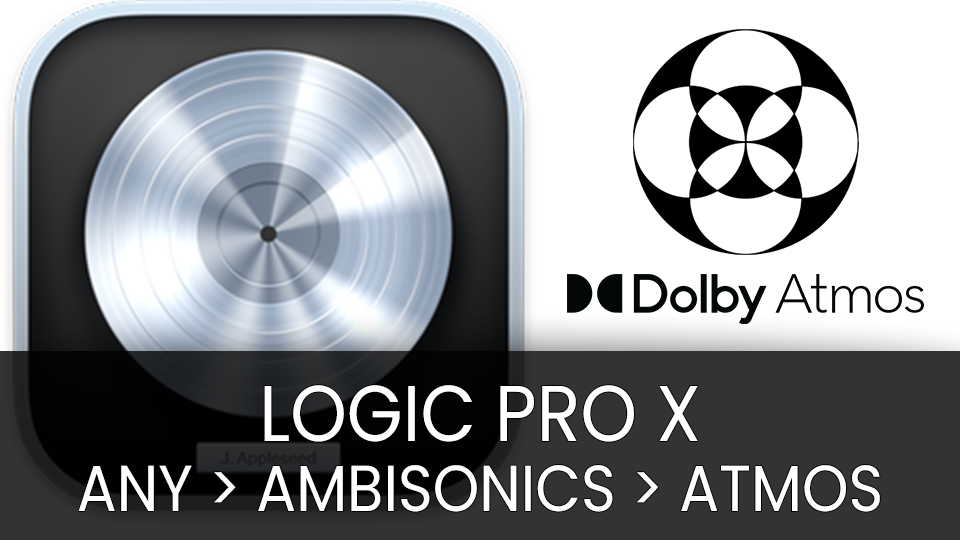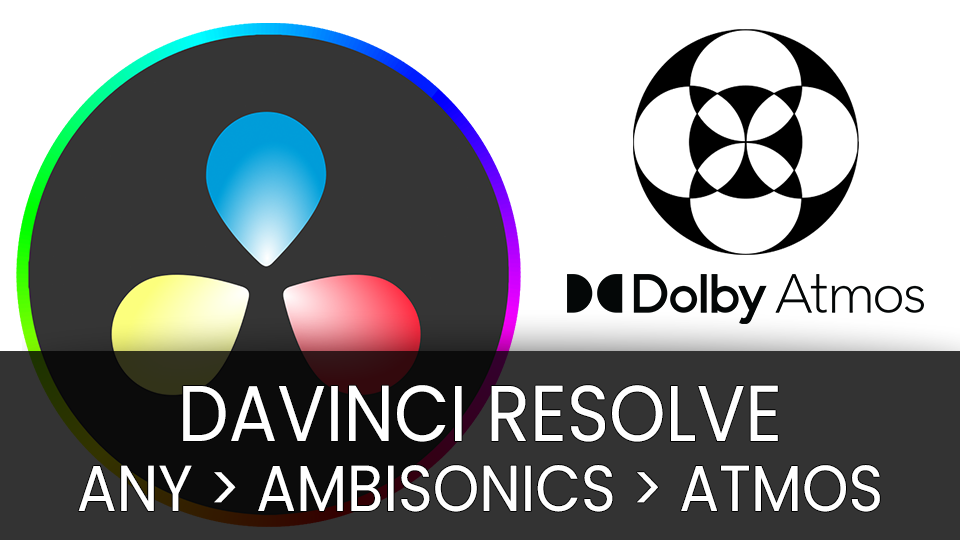‘ab Encoder’
Audio Brewers ab Encoder is a quick and easy way to encode any Mono, Stereo, Quadraphonic, 5.1, 7.1, 7.1.2, 7.1.4, or 9.1.6 to Ambisonics (1OA through 7OA Ambix*).
ab Encoder was made with ease in mind - you shouldn’t have to spend more than 10 seconds encoding a signal to Ambisonics, and this is exactly how we based the whole development of this plugin: Fast and Easy - it simply WORKS!
ab Encoder also comes with a ‘smart troubleshooting’ algorithm, which will check your signal chain and let you know if something is wrong with it.
The plugin come in VST/AU/AAX format and is compatible with any DAW that can support multichannel audio/instrument tracks.
As of today, the list of supported DAWs is:
Pro Tools | Ultimate and Studio
Reaper
Presonus Studio One
Cubase Pro
Nuendo
Logic X
DaVinci Resolve
Max
A Windows and Mac OS version is available.
Input
Select the input based on the signal you want to encode to Ambisonics.
Output
The output will be automatically set by ‘ab Encoder’ based on the width of the track you inserted in.
For example: If your track has 4 channels, the signal will be encoded to 1st Order Ambisonics.
If your track has between 16 channels, the signal will be encoded to 3nd Order Ambisonics
If your track has 64 channels, the signal will be encoded to 7th Order Ambisonics
Remember: Your track has to have a minimum of 4 channels.
Below the INPUT and OUTPUT settings, an OMNIDIRECTIONAL fader will help you give omnidirectionality to the signal, but removing its spatial awareness.
If the INPUT signal is set to Stereo a WIDTH fader will help you control the spread of the stereo Image, to control its directionality.
When INPUT is 7.1 or above, a FLIP SURROUNDS toggle will help you control the order at which the WAV file is arranged.
By default, the input signal should have the channels organised using the Dolby layout order:
L R C LFE Ls Rs Lb Rb (etc)
You should enable FLIP SURROUNDS if your WAV has the Microsoft layout order:
L R C LFE Lb Rb Ls Rs (etc)
The Pad will help you rotate and place the encoded signal around your head. The Crosshair shows the “front centre”, so as you move it around the three-dimensional space, the signal rotates horizontally or moves vertically towards the top-bottom.
Below the Pad, a DISTANCE slider allows you to control the attenuation of the encoded signal - the bigger the distance, the more attenuated.
The encoded signal can be visualised on the bottom of the plugin, thanks to the included visualiser.
How to encode to Ambisonics in Apple Logic Pro X?
In short:
Convert your project to Surround or Dolby Atmos
Make sure the track input is set to Surround
Insert the WAV file with a layout no bigger than the width of your Surround project, so if your project is Atmos 7.1.2, you can insert Mono, Stereo, Quadraphonic, 5.1, 7.1, or 7.1.2 WAV files.
Insert ‘ab Encoder’ in the first insert slot of your track.
Set the INPUT to match your WAV file’s layout
And that’s it!
After your ‘ab Encoder’ insert, any plugin you insert will receive an Ambisonics signal, so make sure that the last insert of your chain is a Decoder to convert the signal to your project’s width.
NOTE: Although if your project is set to Atmos 7.1.2, ‘ab Encoder’ will encode your signal to 2nd Order Ambisonics, for the moment, ‘ab Decoder’ will only take into account the First Order to decode your signal.
How to encode to Ambisonics in Avid Pro Tools Ultimate and Pro Tools Studio?
In short:
Create a track with the width of the WAV file you want to convert. For example, if your file is Stereo, simply create a Stereo track.
Insert your WAV.
Insert ‘ab Encoder’ with the input/output of your choice (for example Stereo | 3rd Order Ambisonics).
And that’s it!
After your ‘ab Encoder’ insert, any plugin you insert will receive an Ambisonics signal, so make sure that the last insert of your chain is a Decoder to convert the signal to your project’s width.
NOTE: Pro Tools doesn’t support 7.1.4 tracks.
How to encode to Ambisonics in Steinberg Nuendo or Cubase Pro?
In short:
Create a third-order Ambisonics track.
Insert any WAV file.
Insert ‘ab Encoder’ on the first Insert Slot
Set the Input to match your inserted WAV file
And that’s it!
After your ‘ab Encoder’ insert, any plugin you insert will receive an Ambisonics signal.
Nuendo | Cubase Pro will automatically decode your signal to your output! Making things easy!
In short:
Create a Dolby Atmos 9.1.6 Track
Drag any supported WAV file
Insert ‘ab Encoder’ on the first Insert Slot
Set the Input to match your inserted WAV file
Insert ‘ab Decoder’ on the next slot
And that’s it!
After your ‘ab Encoder’ insert, any plugin you insert will receive an Ambisonics signal.
Make sure your last insert is an Ambisonics decoder, like ‘ab Decoder’, or ‘ab Decoder HOA’.
NOTE: You MUST decode your Ambisonics signal for it to sound correctly. We strongly suggest you use ‘ab Decoder HOA’.
How to encode to Ambisonics in Cockos Reaper?
In short:
Insert any WAV file to a new track.
Set the width of the track to 16 channels
Insert ‘ab Encoder’ on the first Insert Slot
Set the Input to match your inserted WAV file
And that’s it!
After your ‘ab Encoder’ insert, any plugin you insert will receive an Ambisonics signal.
Make sure your last insert is an Ambisonics decoder, like ‘ab Decoder’, or ‘ab Decoder HOA’.
How to encode to Ambisonics in Cockos Reaper?
In short:
Create a 9.1.6 WAV Audio Track (or BUS)
Insert any supported WAV file or signal (if it’s a BUS). MAKE SURE the track remains 9.1.6, if the width changes, set it back to 9.1.6
Insert ‘ab Encoder’ to the first Insert Slot.
If it’s an Audio Track, set the INPUT to match the width of the WAV file you are encoding.
If it’s a BUS, set the INPUT to 9.1.6, since studio one will be converting the signal to 9.1.6
Make sure the Panner in the track is any of our Decoders
And that’s it!
After your ‘ab Encoder’ insert, any plugin you insert will receive an Ambisonics signal.















